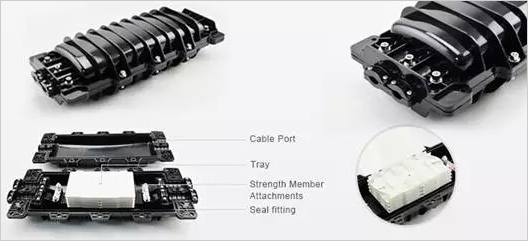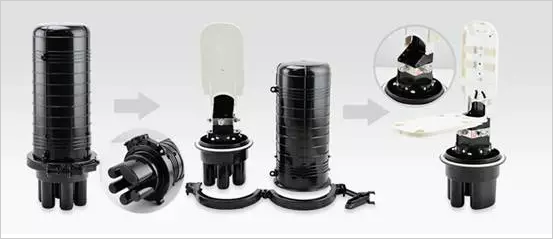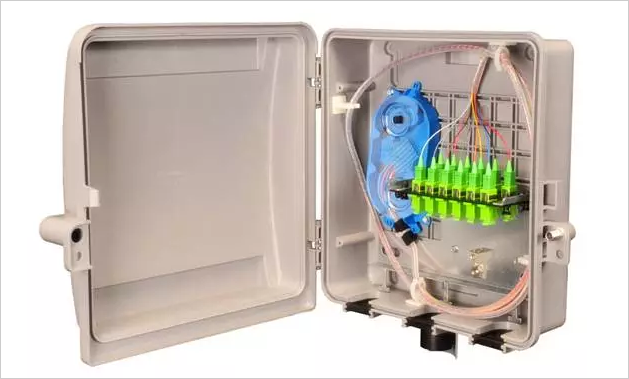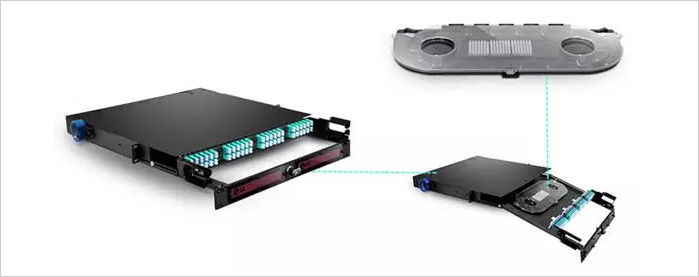With the development of fiber optic networks, the application of fiber optic terminals by fusion or mechanical splicing is now very common. Because tension, bending force, and pressure have a large impact on the installation and application of fiber optics, fiber optic splice trays provide a secure cabling and easy-to-manage environment for fragile fiber optic splices. In the past, fiber splice trays were typically mounted in a box mounted on a wall. Fiber splice trays are now available for many applications in fiber optic networks. The following section explains where to use the fiber splice tray and how to use it.
What is a fiber splice tray?
Fiber splice trays are commonly used to secure and protect fiber splices. There are two main types of fiber optic connectors: one is a fusion splice and the other is a mechanical splice. Different types of fiber splicing trays for welding and mechanical splicing. For different fiber splicing, a dedicated fiber splicing tray is recommended. Another important factor in choosing a fiber splice tray is the number of fibers that can be accommodated. Most fiber splicing trays accommodate 24-core fiber connectors. 12-core fiber splice trays are commonly used in fiber optic networks.
Where do you use a fiber splice tray?
In most applications, fiber splice trays are not strong enough to provide reliable protection for fiber splices alone, so they are often used with other components to protect the fiber. Due to its low space requirements and strong compatibility, fiber splice trays are often used as accessories for other equipment, such as fiber splice boxes, fiber splice boxes, fiber optic junction boxes, etc. The application of fiber splice trays is described in detail below.
Fiber splice tray in fiber splice box
Fiber optic splice closures are widely used in today's fiber optic networks for outdoor applications and harsh environments. It typically contains one or more fiber splice trays that provide installation space and protection for fiber splices. Fiber splice trays for different fiber splice closures can have different designs and fiber counts. Here, a 96-core fiber-optic horizontal fiber connector box and a 24-core fiber-optic connector box are taken as examples.
The figure below shows a 96-core fiber-optic horizontal fiber splice closure. It has two input ports and two output ports to provide space for the 96-fiber connector. There are four standard 24-fiber splice trays in the fiber splice closure.

The 24-core fiber splice box is shown below. It has five inlets and provides up to 24 fiber connectors in two 12-fiber splice trays. The design of the two fiber splicing trays is different from the above, and is suitable for the vertical design of the fiber splicing box.

Fiber splice tray in fiber distribution box
In the FTTX project, fiber-optic cables from service providers typically need to be connected to fiber-optic cables deployed near end users. Fiber network installers typically connect the feeder cable to the end user via fiber splicing. Fiber optic distribution boxes are commonly used in FTTX projects to distribute a single fiber to individual end users. To manage and protect fiber splicing, fiber optic splice trays are typically configured in fiber optic distribution boxes, as shown in the following figure.

Fiber splice tray in fiber distribution box
In addition to the above two applications, fiber optic splice trays are also very popular in data centers and server rooms. In the data center, the splicing of fiber optic cables and fiber pigtails is easy to implement. Compared with other fiber-optic terminal methods, this method has lower space requirements and better network performance. Fiber splice trays are typically installed in fiber optic distribution boxes to provide a secure, easy-to-manage environment for fiber splices. As shown in the figure below, this is a 96-core fiber distribution box with four 24-fiber adapters on the front panel. The fiber optic distribution box accommodates four 24-fiber splice trays, providing space for splicing of 96-fiber fibers.

The fiber splice tray is a simple and easy-to-use component that provides space and protection for fiber splices by fusion or mechanical splice. It is commonly used in fiber splicing boxes, fiber splice boxes, and fiber distribution boxes, and provides a safe, well-managed environment for fiber splicing.
Application industry
The equipment meets the parts processing requirements of most industries, working accuracy is stable. At present, laser cutting machines have been widely used in electronics, electrical, mechanical hardware, new energy lithium, packaging, solar, LED, automotive and other industries.
Metal Sheet And Tube Cutting Machines
Metal Sheet Cutting Machines,Metal Tube Cutting Machines,Sheet Metal Cutting Machine,Metal Cutting Machine
Jinan Bodor CNC Machine Co., Ltd. , https://www.bodorcnc.com
![<?echo $_SERVER['SERVER_NAME'];?>](/template/twentyseventeen/skin/images/header.jpg)